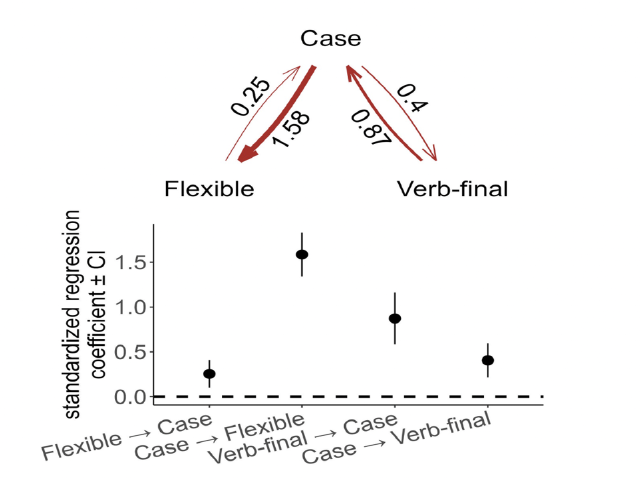The evolutionary dynamics of how languages signal who does what to whom

Authors:
Citation:
Details:
Published: 3 March, 2024.
Download:
Abstract:
Languages vary in how they signal “who does what to whom”. Three main strategies to indicate the participant roles of “who” and “whom” are case, verbal indexing, and rigid word order. Languages that disambiguate these roles with case tend to have either verb-final or flexible word order. Most previous studies that found these patterns used limited language samples and overlooked the causal mechanisms that could jointly explain the association between all three features. Here we analyze grammatical data from a Grambank sample of 1705 languages with phylogenetic causal graph methods. Our results corroborate the claims that verb-final word order generally gives rise to case and, strikingly, establish that case tends to lead to the development of flexible word order. The combination of novel statistical methods and the Grambank database provides a model for the rigorous testing of causal claims about the factors that shape patterns of linguistic diversity.